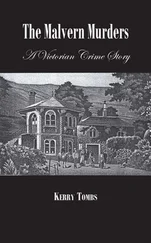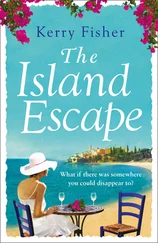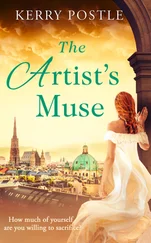When Jim Garrison ultimately neglected to bring me to trial, I took it as a tacit admission he had at last perceived the error of his ways.
Meanwhile, in the realm of public affairs I busied myself with other concerns. Of all newsworthy events, the John Kennedy murder seemed to me the most boring.
For reasons I could not clearly identify at the time, I was to find the murder of Hollywood actress Sharon Tate far more disturbing, When I read The Family by Ed Sanders (E.P. Dutton, 1971) my uneasiness increased. Charles Manson was not typical of the hip counter-culture I had gradually come to consider my own, after the appeal of Ayn Rand's philosophy diminished in my eyes. Nevertheless, something about him and his followers seemed far more menacing and important than I could justify in terms of a few sensationally gory killings. As if warned in a forgotten nightmare, I felt that I had expected someone like Manson to appear on the scene. All that I read about him confirmed this eerie, elusive anxiety.
Besides that, much like Jim Garrison, Charles Manson was a paranoid. Nowhere is this more evident than on page 129 of The Family , where he is quoted as saying: "Christ on the cross, the coyote in the desert, it's the same thing, man. The coyote is beautiful. He moves through the desert delicately, aware of everything, looking around. He hears every sound, smells every smell, sees everything that moves. He's always in a state of total paranoia and total paranoia is total awareness. You can learn from the coyote just like you learn from a child. A baby is born into the world in a state of fear. Total paranoia and awareness… " Once again I was grappling with the riddle of a man who appeared to act on the basis of a supreme confidence in the validity of his own delusions.
Escalation of the Vietnam war had radicalized me, once again, politically, so Charlie Manson's affinity for right-wing organizations was something else that alarmed me. Most particularly I was spooked by allegations about links between Manson's people and the Process Church, for when I had returned to New Orleans in order to clear myself, unsuccessfully, of Jim Garrison's suspicions, I encountered the Process Church there, in circumstances giving me ample reason to suspect they were at least partially involved in framing me.
So as to avoid the mistakes of people like Garrison and Manson, it seemed essential to study psychology. That was another subject I found more fascinating than conspiracy theories about the John F. Kennedy assassination. Already acquainted with Freud and other pioneers of psychoanalysis, I began devoting my attention to more recent trends. That the older theories were unconsciously tainted with reactionary ideology was frequently mentioned in my political readings.
In 1972 I discovered a psychology book that dovetailed beautifully with my political opinions, by then both anarchist and left of center. A collection of readings compiled by Jerome Agel and the Radical Therapist newspaper staff, The Radical Therapist Anthology found the roots of nearly all neurosis and psychosis outside the individual, lodged firmly and visibly in the authoritarian class structure of society. As a sociology major at Georgia State University, I had already begun to suspect as much. There was only one hitch, best summed up in The Radical Psychiatry Manifesto by Claude Steiner: "Paranoia is a state of heightened awareness. Most people are persecuted beyond their wildest delusions."
I wondered if that could be true. Certainly it was not without personal relevance, in terms of my own very unsatisfactory adjustment to the John F. Kennedy murder mystery. Perpetually fearing that my radical friends would think I was a CIA agent because of what Garrison had said, and yet afraid that I would become paranoid if I delved into the unanswered questions about Oswald too deeply, I walked an uncomfortably narrow line.
"There is still another psychological process that I have run across in my explorations of failure to actualize the self. This evasion of growth can also be set in motion by a fear of paranoia."
Although I was not to read those particular words in The Farther Reaches of Human Nature by Abraham Maslow until many years later, I was versed enough in the modern literature of psychology to realize that traditional Freudian notions of paranoid schizophrenia and classical paranoia were under attack by more than just wild-eyed radicals.
One of my textbooks in school contained a sociological study of a man who was committed for symptoms of paranoia; it demonstrated that, due to his rather unpleasant personality, he was actually being secretly harassed by his co-workers who, upon being interviewed, admitted to as much.
At that point I took a long second look at the origins of my own fears of paranoia.
What popularized that brand of psychosis for my generation was the film, The Caine Mutiny , with Humphrey Bogart clicking his steel marbles compulsively, saying "I kid you not," and making a fool of himself over a few stolen scoops of ice cream.
Another French Quarter writer who worked in a record store next to the Bourbon House, where I ate and drank and socialized when I lived in New Orleans, possessed a book about color psychology that said brown was the favorite color of most paranoids. He added that most novelists tended toward paranoia, something about which we both laughed a little nervously.
Another Quarterite, a painter named Loy Ann Camp who was among my closest friends, had a textbook from her days in nursing school that said paranoia was related to fear of latent homosexuality. Since my reason for joining the Marines earlier had been to prove to myself that I was a man in every sense I didn't find that information comforting either.
From additional sources I gathered that paranoids were quite undesirable cranks who took to sitting in corners stroking their chins and observing those around them with sidelong glances. Senator Joseph McCarthy was said to have been a paranoid, as was Robert Welch, founder of the John Birch Society.
In fact, all the really famous paranoids seemed to be anti-Communist, a consideration that did not sit well with my own rational capitalist philosophy of those days. Paranoids, in addition to all the other problems they were causing, were giving my politics a bad name with outlandish notions like Welch's charge that grandfatherly old Ike was "a conscious agent of the Communist conspiracy" and his grandiose ambition to impeach Earl Warren from the Supreme Court.
Intellectual respectability required mental health, and it was becoming evident to me by then that mental health consisted of trusting everyone about everything as much as possible, and, for good measure, poking fun at anyone who didn't. Especially to be trusted were the mass media, whose owners and personnel were not to be regarded as minions of the Establishment because, as they themselves used to attest with confidence, there was no Establishment in the United States of America. Only foreigners and paranoids believed that there was.
Intellectualizing and joking about paranoia was a favorite pastime of post-Beatnik, pre-Hippie Bohemian America, for reasons that were undoubtedly the result of coincidence, at least among individuals who did not want their sanity called into question.
An habituate of the Bourbon House, Chris Lanham, once entertained us with the diabolical theory that the psychological classification of paranoia had been developed by conspirators for the purpose of discrediting anyone bent on exposing them.
When his friend, Jack Burnside, suggested sharing this hilariously evil notion with a wandering conspiracy buff we called Crazy David, because he thought people like the Rockefellers and DuPont controlled the government, we told Jack the joke had gone far enough. Crazy David might actually believe him. And, as everybody knew, paranoids who received reinforcement for their delusions could become very dangerous.
Читать дальше












